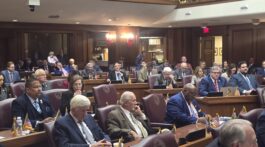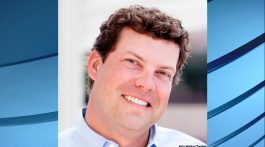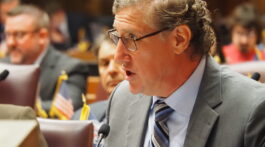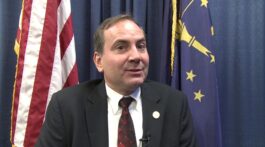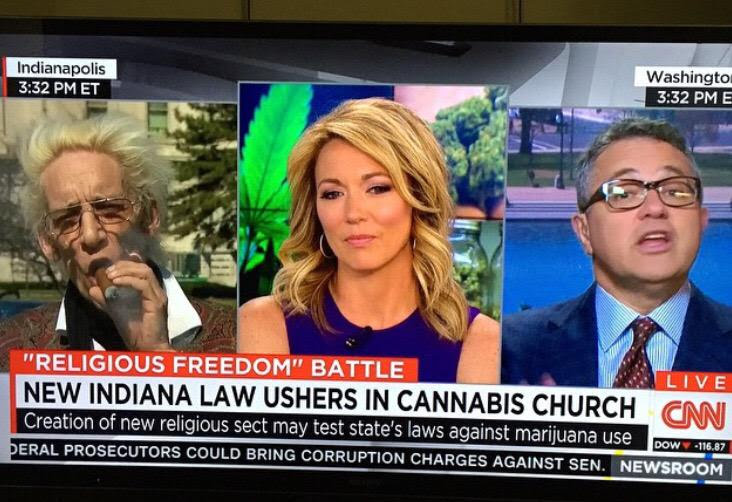by Abdul-Hakim Shabazz
You may have noticed quite a few recent stories regarding the 10th anniversary of the Religious Freedom Restoration Act, or RFRA. If you were around during that time, a chill probably ran down your spine, as it was one of the most significant unforced errors I have ever seen in my 30 years of covering politics.
For those of you who weren’t fortunate enough to be around then, let me give you a quick recap. Originally, RFRA wasn’t pushed and promoted by then-Governor Mike Pence. It basically said that if the government was going to infringe on religious liberty, it needed to have a pretty good reason for doing so. Proponents said it was necessary to ensure religious freedom, but opponents said it was basically a big, giant anti-LGBTQ bill in response to the legalization of same-sex marriage. However, when Pence took the “Flying Nun” photo with the religious leaders at the bill signing, it was his to own and things got real ugly, real quick.

There were massive protests and boycotts, and I even remember reading a letter stating RFRA would have hurt downtown Indianapolis as tourism dollars would have started to dry up, and that would have impacted the dollars necessary to pay for the bonds that built Lucas Oil Stadium as well as the convention center, and a lot of folks outside of Indiana would have had to pick up the tab. And then there was Governor Mike Pence’s politically disastrous appearance on “This Week With George Stephanopoulos”, which was either the icing on the cake or the last nail in RFRA’s coffin. Then House Speaker Brian Bosma and Senate President Pro Tempore David Long worked like crazy to create the “RFRA Fix.”

As the Indy Star wrote at the time, the “fix” did not allow for RFRA to be used to overrule local and state civil rights laws and was meant to stop the controversial religious objections law from being used to discriminate against people in the lesbian, gay, bisexual and transgender community.” In other words, for the first time, and somewhat ironically, a state law was created to protect members of the LGBTQ community from discrimination.
And then came the First Church of Cannabis.
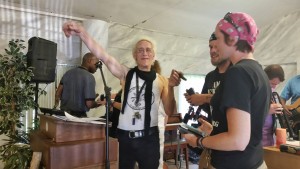
I remember this as if it were yesterday because I came up with the idea. I was sitting at Nicky Blaine’s, having a cocktail and a cigar and reviewing the statute, when it dawned on me that Indiana might have just legalized marijuana for religious purposes, as RFRA basically meant that the government better have a pretty good reason before it could infringe on your religious freedom. So, I wrote about it and sent a copy of the story to church founder Bill Levin. The next day, Levin was at the Statehouse filing his paperwork to start his church, much to the chagrin of religious conservatives. And lo and behold, a decade later, they are still there.
Not only are they here, but since then, marijuana has become legal in the states surrounding Indiana; no one is more than a two-hour drive from legal pot. And who needs to leave the state when there are CBD shops all over the place? Seventy-percent of Hoosiers support some form of legalization. There’s legislation introduced every session to fully legalize marijuana, and even Governor Mike Braun is open to marijuana legalization for medicinal purposes. As I have said before, like Sunday retail alcohol sales and Daylight Saving Time, marijuana legalization is inevitable.
So, at the end of the day, what did all this teach us? Lesson number one: Never underestimate lawmakers’ abilities to sail the ship of state into some of the most enormous political icebergs possible. Number two, never underestimate Hoosiers’ abilities to find “loopholes” in the law and push it as far as possible. And thirdly, never underestimate my ability, with an occasional “edible enhancer”, to come up with ideas like this.
Abdul-Hakim Shabazz is a licensed attorney and the editor of Indy Politics.


